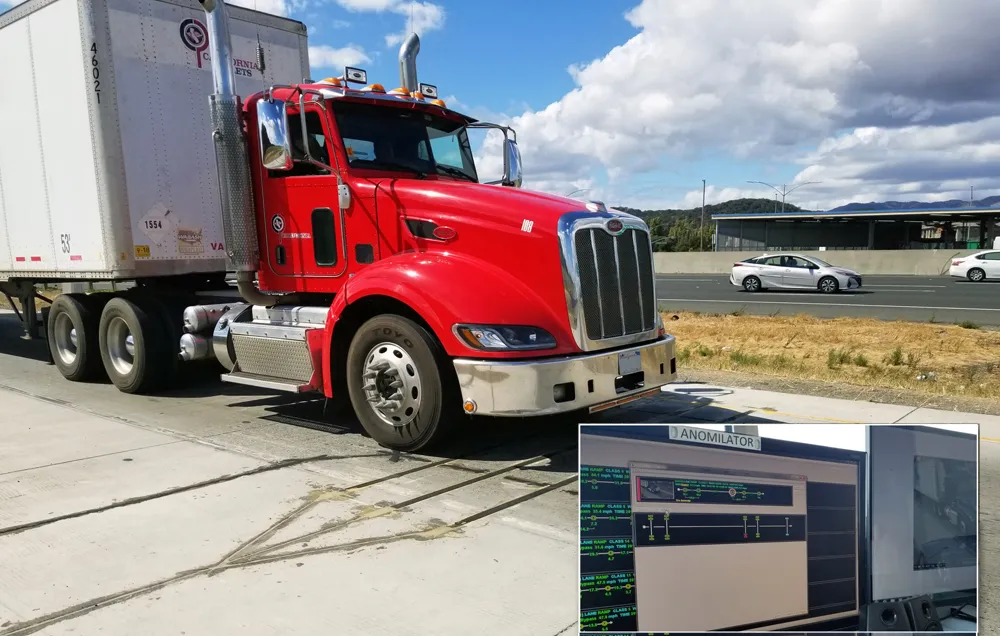VI2M enforcement systems use the VectorSense tyre sensor suite in ramp and mainline weigh station bypass solutions as well as for advanced data collection applications. The tyre sensor suite is a new in-road sensor technology that provides vehicle position and individual tyre footprint data for use in traffic data collection programs, commercial vehicle operations, and toll road operations. This additional and advanced vehicle data provides for differentiation between single standard tyre width, ‘super single’ tyre width, and dual tyre width configurations. This system also provides information to identify tyres that are overinflated or underinflated at highway speeds, presenting new opportunities in data collection, safety as well as weigh station bypass system solutions. IRD says this is unparalleled by any other sensor or system currently available in the market.
In North America, IRD is best known for Weigh-In-Motion (WIM) systems for Commercial Vehicle Operations (CVO) and the company will also be presenting its most recent developments in scales, sensors, and complete integrated ITS solutions. It will be showcasing products, software, and fully integrated systems for automated truck weigh stations and overweight vehicle enforcement systems, advanced data collection systems, borders and ports security systems, bridge monitoring and safety, access control systems at secure facilities, and automated toll collection and audit systems. As IRD points out, its systems bring together WIM, machine vision, automatic vehicle identification and communications technologies to be a ‘one source, multi-solution’ system integrator.
Introducing IRD’s vehicle in motion enforcement and detection
IRD, which is celebrating 35 years in business this year, will use the ITS America Annual Meeting to introduce VI2M (Vehicle Information in Motion) enforcement systems for data collection and commercial vehicle operations.
May 1, 2015
Read time: 2 mins








